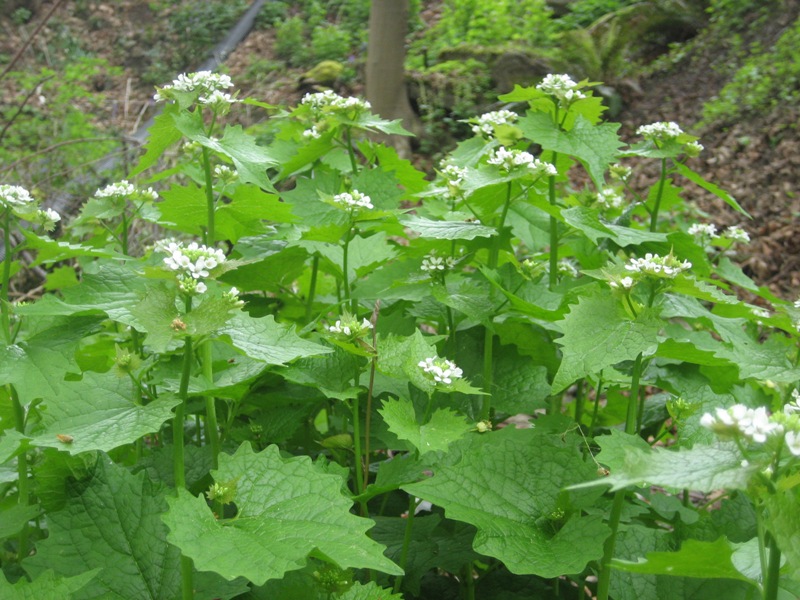To prevent this we have been spending much of our time on
Garlic Mustard removal. There are various techniques we use. The most basic
method is hand removal. This requires simply pulling the plants by hand, making
sure to remove as much of the root as possible. Another method is to use a
propane torch to burn the plants. This is only effective on first year plants,
but it is a much faster way to control large patches. We usually go through an
area and pull the second year plants, then go back through and torch the first
year plants. However, if the area has too many second year plants we can also
use a string trimmer to cut them. This doesn’t always kill the second year
plants, but it does hinder the growth, and any plants that resprout will
produce less seeds. We will also be doing this after plants have produced seed,
but before seed release (late June or early July). We will make sure that plants
are bagged and disposed of properly so that seeds are contained.
As I previously mentioned, Garlic Mustard is an edible herb.
A quick internet search will lead you to several different recipes. If you are
interested you can come pick some at Stone Park and take it home to try. Every
plant you pick will help the park and it just might become the secret
ingredient in all your best dishes! Contact us here at the park and we can direct
you to a patch of first year plants (second year plants are bitter and
undesirable). Just be sure to clean your clothing and shoes after walking
through an area of garlic mustard, so that you don’t spread seeds to new areas
of the park or your home. Also, if you just want to spend some time outdoors,
and want to help keep the park beautiful and healthy, we would be glad to have
you join our team for a day, or even an hour. Every plant pulled is 100-200
less for next year. Think of the difference you could make!
-S.H.


